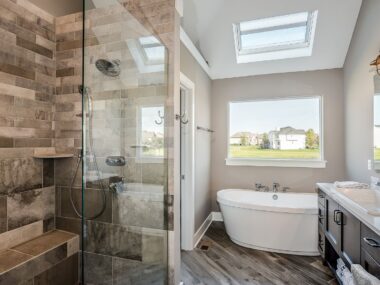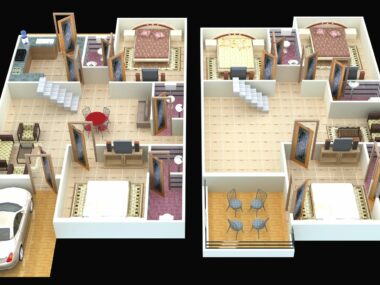Starting an architecture visualization studio is an exciting opportunity. It is in tune with the fast-growing demand for visual storytelling in architecture, real estate, and product design. With advanced technology, 3D rendering services are becoming a must to present projects convincingly and clearly. The following article will guide you through the first steps toward launching your studio.
Market Research and Business Planning
Research the Market
You need to understand the market. Start by investigating the demand for 3D visualization services. Find your competitors and learn about their pros and cons. Find potential clients and analyze the latest market trends. It will help you understand how to fit in and what unique value you can offer.
Develop a Business Plan
Your business plan will be the GPS that guides you to success. It should contain the following:
- Market Analysis: Elaborate on your research findings regarding demand and competition.
- Business Model: Describe your services, target market, and how you will deliver your offerings.
- Services: 3D architectural rendering, interior and exterior visualization, animation, and others. Focus on the ones that are in the highest demand and have the lowest competition. Market analysis should help you with that.
- Pricing Strategy: Describe your pricing model based on market research and cost analysis.
- Financial Projections: Explain your starting-up costs, revenue projections, and timetable for profitability.
Establishing Your Studio: Choose the Right Equipment
High-level rendering services require just the right tools. Therefore, the performance and hardware needed include investment in tools such as high-performance computers and graphics tablets. For software, it may be presented in a basic form. You will need Autodesk 3ds Max software for 3D modeling and rendering; Blender for 3D modeling, animation, and rendering; and V-Ray—an ultrapowerful rendering engine that brings a tremendous photorealistic touch to your work—by integrating with 3ds Max and other major 3D animation software for stunningly realistic rendering.
Creating a Comfortable Workspace
Finally, your work environment should be inspirational and foster productivity. For example, the workspace should include the following:

- Ample space for the equipment and team.
- Good lighting for detailed work.
- Comfortable furniture that encourages long working hours.
- An inspiring decor.
Building a Portfolio Making Sample Projects
A rich portfolio is the key to attracting clients. Begin by creating samples that best represent your skills and aptitude for the work—either personal or collaborative projects. Strive to offer both interior and exterior architectural rendering services to demonstrate your versatility.
Developing Soft Skills
Diversity is a very significant aspect of your portfolio.

Include diverse visualizations relating to interiors, which should demonstrate in-depth room design, exteriors that focus on building exteriors and landscape, animations, and VR projects that ensure an individual can build immersive experiences.
Developing a Brand Identity
Your studio’s branding must reflect its vision and values. Create a memorable logo and choose representative brand colors. Ensure consistency in the application of this across all marketing materials.
Online Presence
Create a professional website for your business and present your works via social platforms like Instagram, LinkedIn, or Behance to promote them.
Networking and Client Acquisition
Develop Professional Working Relationships
Establishing connections is key to the 3D rendering services industry. So, go to industry events, join professional organizations, and connect with other professionals on LinkedIn—this way, different opportunities and collaborations open up.
Finding Clients
You can do this by cold emailing potential clients with your well-crafted message, leveraging your existing contacts for referrals, and conducting free workshops or webinars to showcase expertise and win business. You can also use social media and freelance platforms to enrich your portfolio with new projects.
Managing Projects and Finances
Project Management
An effective project manager ensures that everything moves smoothly. Use tools like Trello, Asana, or Microsoft Project to track tasks and deadlines. These will help you manage multiple projects effectively.
Financial Management
Financial management provides major sustainability. Set budgets, track all expenses, and invoice clients without delay. Accounting software like QuickBooks or FreshBooks can make such work easier.
Common Challenges
Running a 3D visualization studio will bring challenges such as acquiring clients, managing workloads, and keeping updated on technology. It always pays to be forewarned of them.
Yet, successful long-term realization will result from continuous learning, mentorship by professional experts, and maintaining a good balance between work and personal life.
Taking a closer look, launching a 3D visualization studio presents various challenges, primarily centered around the competitive nature of the digital design industry and the high startup costs. Initial investments can be substantial, as state-of-the-art computer hardware and professional-grade software licenses for programs like Autodesk 3ds Max, Maya, and V-Ray are essential for producing high-quality work. Attracting skilled artists who can deliver the intricate details required in professional 3D renderings can be difficult and often requires offering competitive salaries and benefits.
Another significant challenge is building a robust portfolio to attract and retain clients. New studios must demonstrate their capability through impressive past projects, which can be a catch-22 for studios without existing extensive experience. Marketing a new studio requires substantial effort and investment, as brand visibility in the crowded digital space is crucial.
Keeping up with rapidly changing technology and industry standards demands ongoing education and software updates, adding to operational costs. Ensuring data security, managing large file sizes, and rendering times with efficient workflow strategies is critical to maintaining productivity and client satisfaction. These challenges must be carefully managed to ensure the successful launch and sustainability of a 3D visualization studio.
Conclusion
Establishing an architectural visualization studio requires responsible planning, continuous learning, and effective networking. This vision becomes a reality if you know the market, get the right portfolio setup with the right tools for your studio, and learn how to sell your services.
Author:
Finn Erlund
With a keen eye for the latest industry trends and technologies, Finn brings his readers over a decade of experience. His articles delve into the intricacies of 3D modeling, innovative architectural practices, and the impact of new technologies on traditional and modern design.






